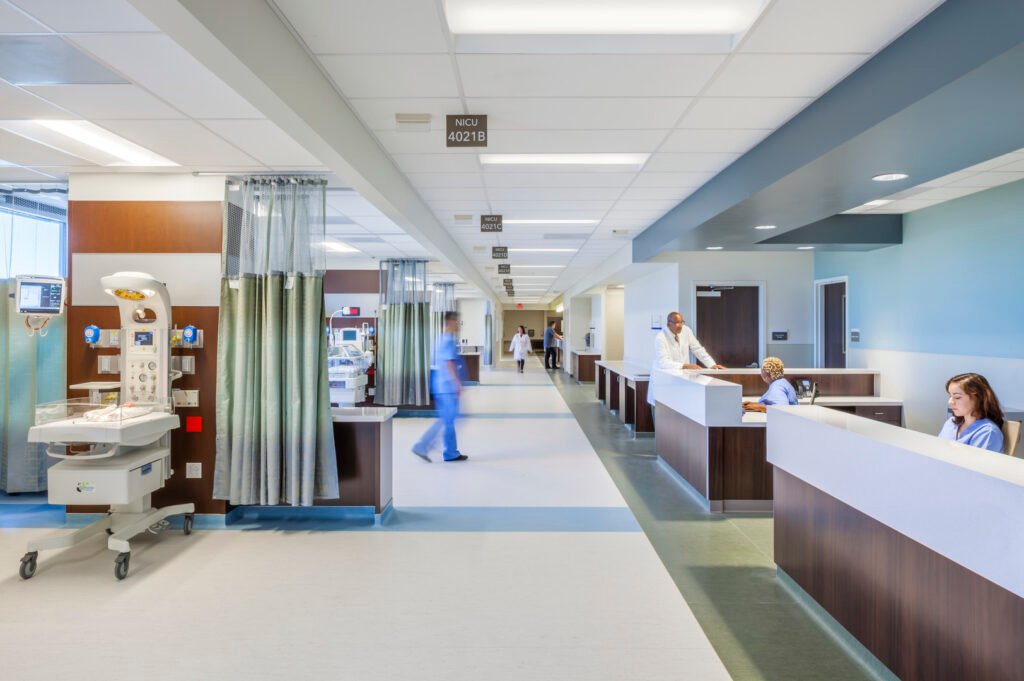Designing a hospital is a complex and multifaceted challenge that involves balancing technical requirements with the human touch necessary in environments devoted to healthcare. The goal is to create a facility that not only supports medical functionality and efficiency but also promotes healing and is adaptable to the evolving landscape of healthcare technology. Here are some of the critical challenges involved in designing a hospital:
Compliance with Health and Safety Regulations
Hospitals must adhere to a stringent set of health and safety regulations that influence all aspects of their design. This includes building codes, accessibility standards, and environmental safety requirements. Ensuring compliance while maintaining design efficiency and patient comfort requires meticulous planning and a deep understanding of both national and local laws.
Efficient Use of Space
Maximizing the use of space in a way that promotes efficiency for healthcare providers and comfort for patients is a key challenge. The layout must facilitate easy movement for staff and patients, house the necessary equipment without clutter, and allow for expansions or reconfigurations as medical technology advances and healthcare needs change.
Patient-Centric Design
Modern hospital design increasingly focuses on the patient experience, aiming to reduce stress and promote healing through a welcoming environment. This involves considerations for natural lighting, soundproofing, privacy, and the inclusion of green spaces or elements that contribute to a therapeutic atmosphere.
Integration of Advanced Technology
Hospitals are complex ecosystems of advanced technological systems, including electronic health records (EHRs), diagnostic tools, and specialized medical equipment. Design must facilitate the integration of these technologies in a way that supports their use and maximizes their benefits to patient care and staff efficiency.
Sustainability
Designing with sustainability in mind is not just an ethical mandate but also a practical one, as hospitals consume a significant amount of energy. Sustainable design can significantly reduce operational costs through energy efficiency, sustainable material use, and effective waste management systems.
Accessibility
Ensuring that hospital facilities are accessible to all, regardless of physical ability, is a fundamental aspect of design. This means creating environments that are navigable and understandable for people with a wide range of disabilities, including mobility issues, visual impairments, or other challenges.
Aesthetic and Functional Balance
While the functionality of a hospital is paramount, aesthetics also play a crucial role in the overall environment and its impact on patients and staff. Finding the right balance between aesthetic appeal and practical utility is a significant challenge that requires innovative design solutions.
Adapting to Future Needs
The rapid pace of change in healthcare technology and the evolving nature of healthcare services mean that hospitals must be designed for adaptability. This includes the ability to upgrade facilities with minimal disruption and to reconfigure spaces as needed to accommodate new equipment or services.
Conclusion
The design of a hospital involves careful consideration of various critical factors, from legal compliance and space utilization to patient comfort and technological integration. The best hospital designs are those that anticipate future trends and challenges, adapting to the needs of the time while focusing on the fundamental goal of patient care. Balancing these elements is what makes hospital design both a challenging and rewarding endeavor.
